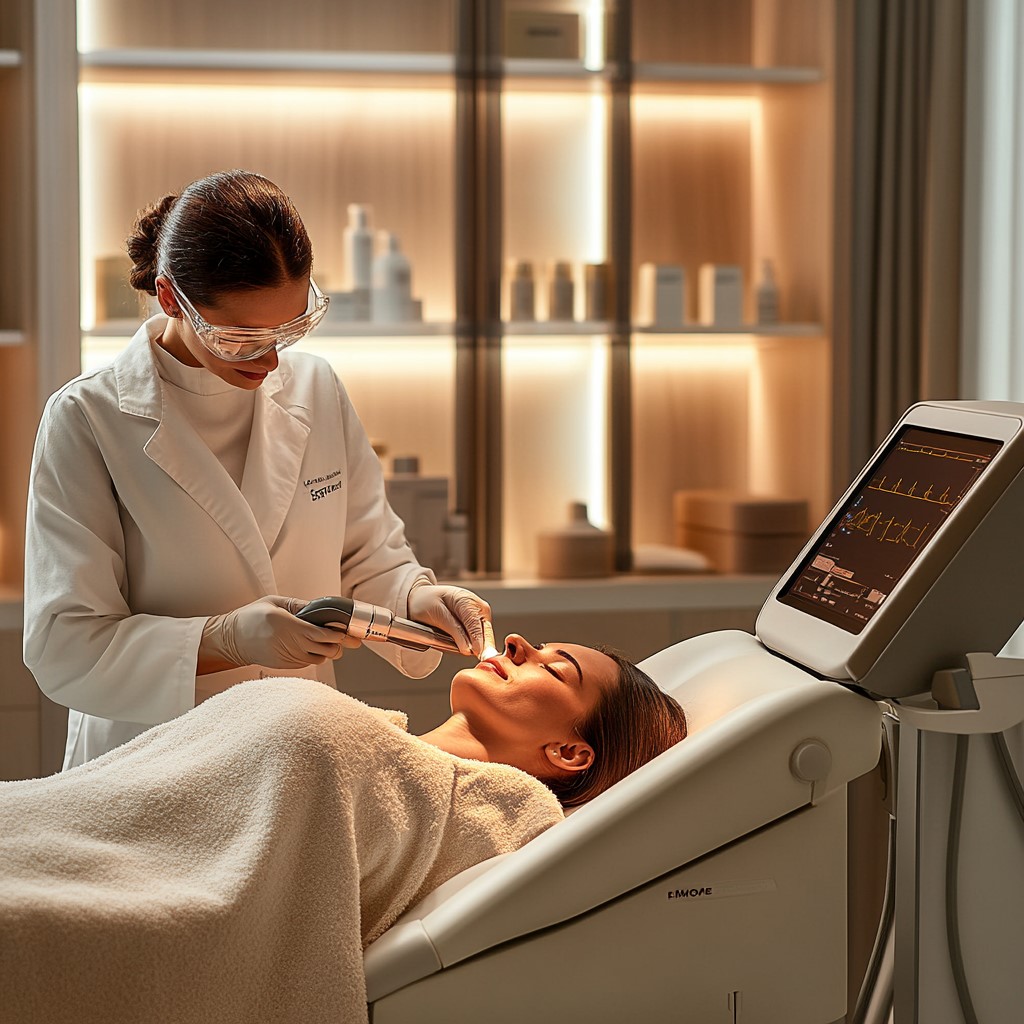Imagine glancing in the mirror and noticing a small, soft growth on your skin that wasn’t there before. These benign protrusions, known as skin tags, are common for many individuals.
While generally harmless, skin tags can become a source of discomfort or self-consciousness, mainly when located in visible areas or subjected to friction.
Understanding the nature of skin tags and the safe, effective methods available for their removal is essential for maintaining both your skin health and confidence.
What Are Skin Tags?
Skin tags, medically referred to as acrochordons, are small, soft, benign skin growths that often appear on various body parts.
They typically present as flesh-colored or slightly darker protrusions, ranging in size from a few millimeters to a couple of centimeters.
Common Areas Where Skin Tags Develop
Common locations for skin tags typically include the neck, armpits, under the breasts, eyelids, and other areas where skin tends to fold or experience friction.
While they are often harmless, the appearance and placement of skin tags can lead some individuals to seek removal options.
Causes and Risk Factors
The exact cause of skin tags is still not fully understood, but several factors might make you more prone to developing them:
- Friction: Areas like your neck, armpits, and groin, where skin frequently rubs together, are common spots for skin tags.
- Genetics: If skin tags are common among your family members, you might also be more likely to get them.
- Weight: Carrying extra pounds can lead to more skin folds, increasing friction and the chance of skin tags forming.
- Diabetes: People with diabetes or insulin resistance tend to develop skin tags more often.
- Hormonal Changes: Shifts in hormones, especially during pregnancy, can make skin tags more likely to appear.
Understanding these common factors can help you determine and manage skin tags more effectively.
Are Skin Tags Harmful?
Skin tags are commonly benign and do not pose any health risks. They are non-cancerous and typically painless. However, skin tags can become irritated or inflamed due to skin friction from clothing or jewelry, leading to discomfort.
If a skin tag changes appearance, bleeds or causes pain, it’s advisable to consult a healthcare professional to rule out other skin conditions. Many individuals opt for removal for cosmetic reasons or to alleviate irritation.
Professional Skin Tag Removal Methods – 4 Safe Solutions

Professional treatments offer the best results with minimal risks for safe and effective skin tag removal. Here are the most common medical procedures used by experts to remove skin tags quickly and safely.
1. Cryotherapy
This skin treatment involves the application of liquid nitrogen to freeze the skin tag, resulting in falling off after a short period. This method is effective and minimally invasive, allowing for a quick recovery.
Some patients may develop a small blister at the treatment site, which typically heals within a few days.
2. Electrocautery
Electrocautery removes skin tags by using electric currents to generate controlled heat, which safely burns away the growth. A specialized device ensures precise application for effective removal.
Benefits of electrocautery include precision in targeting the skin tag and minimal bleeding. Potential side effects are uncommon but can include minor scarring or changes in skin pigmentation at the treatment site.
3. Surgical Excision
Surgical excision is a precise procedure where a healthcare professional removes the skin tag using sterile tools like scissors or a scalpel. This procedure is done under local anesthesia to keep patients comfortable.
The healthcare provider carefully removes the skin tag and ensures proper wound care for optimal healing. Surgical excision is especially effective for larger skin tags and provides immediate results.
4. Laser Removal
Laser removal uses focused light energy to safely remove skin tags with high precision. This method is quick, causes minimal damage to nearby skin, and has a low risk of scarring. Since it requires special equipment, it should only be done by a trained professional for safe and effective results.
At-Home Removal Methods For Skin Tags: Risks & Considerations

Before you try removing your skin tags at home, it’s important to understand the risks and limitations of OTC treatments and home remedies.
Over-the-Counter Products
There are many over-the-counter (OTC) products marketed for skin tag removal, such as creams, ointments, and freezing kits. While some people may find them effective, there is limited clinical evidence to support their success.
These products also come with risks, including skin irritation, allergic reactions, and incomplete removal, which may lead to infection or scarring. It’s important to use OTC treatments with caution and consult a licensed healthcare professional before trying them.
Home Remedies
Common home remedies for skin tag removal include applying substances like:
- tea tree oil,
- apple cider vinegar or
- using methods such as tying off the skin tag with dental floss.
However, these approaches lack scientific validation and can pose safety concerns.
For instance, applying acidic substances can cause skin burns or irritation, and attempting to cut off a skin tag increases the risk of infection and significant bleeding. Due to these risks, home remedies are generally discouraged by medical professionals.
Why Professional Skin Tag Removal is Recommended

Seeking professional removal of skin tags ensures that the procedure is done in a sterile environment by trained healthcare providers, minimizing the risk of complications. Professionals can accurately assess the skin growth to confirm it is a benign skin tag and not a more serious condition.
Professional removal methods are typically quick, effective, and low chances of scarring compared to at-home attempts. Prioritizing professional care ensures both safety and optimal outcomes.
Choosing the Right Clinic For Skin Tag Removal in San Gabriel, CA
When selecting a clinic for skin tag removal in San Gabriel, consider the following factors:
- Reputation and Reviews: Look for clinics with positive patient testimonials and a strong reputation in the community.
- Qualifications and Experience: Ensure the medical staff are certified professionals with experience in dermatological procedures.
- Range of Services: A clinic offering a comprehensive array of skin care services may provide more tailored treatment options.
Why Choose DSC Laser and Skincare Center
DSC Laser and Skincare Center in San Gabriel, CA, exemplifies a commitment to client well-being and satisfaction. The center utilizes state-of-the-art technology and up-to-date treatment protocols to ensure superior outcomes.
The experienced and professional staff prioritize patient safety and comfort, making DSC a trusted choice for skin tag removal and other cosmetic treatments.
Benefits of Professional Skin Tag Removal
Opting for professional skin tag removal offers numerous advantages that extend beyond mere aesthetics.
Safety and Hygiene
Undergoing removal in a clinical setting ensures that the procedure is done under sterile conditions by trained professionals. This significantly minimizes the risk of infections and complications that can arise from non-professional attempts.
Efficiency and Effectiveness
Professional methods are designed to remove skin tags swiftly and effectively. Techniques such as laser removal or electrocautery provide immediate results, allowing you to return to daily activities with minimal downtime.
Aesthetic Outcomes
Our skilled practitioners aim to minimize scarring and preserve the natural appearance of your skin. By using advanced equipment and techniques, we ensure that the treated areas heal seamlessly, enhancing your overall skin aesthetics.
Frequently Asked Questions (FAQs)
1. Is skin tag removal covered by insurance?
Skin tag removal is typically classified as a cosmetic procedure, so most insurance plans do not cover it. However, coverage may be possible if a skin tag is causing discomfort or has the potential for malignancy. It’s best to consult with your insurance provider for specific details.
2. How long does the procedure take?
The duration of the skin tag removal varies based on the number and size of skin tags being removed. Typically, sessions can last around 30 minutes to an hour.
3. Will the skin tags return after removal?
Once a skin tag is professionally removed, it is unlikely to return. However, new skin tags can develop in other areas over time, especially if you have a predisposition to them.
4. How should I prepare for the procedure?
Preparation is minimal. On the day of your procedure, avoid using lotions or creams in the treatment area. Wear comfortable clothing that allows convenient access to the skin tag.
5. Can all skin tags be removed in one session?
This depends on the number and size of the skin tags. During your consultation, our specialists will provide a treatment plan outlining the required sessions.
6. What is the cost of professional skin tag removal?
The cost varies based on the removal method and the number of skin tags. Our pricing is clear and upfront, and you’ll receive a detailed quote during your consultation.
Final Words
Skin tags may be harmless, but they can still cause discomfort or affect your confidence, especially when they appear in visible or high-friction areas. While at-home remedies and over-the-counter treatments may seem convenient, they come with risks such as irritation, infection, and scarring.
Choosing a professional skin tag removal procedure ensures that your treatment is safe, effective, and performed in a sterile environment by trained experts.
At DSC Laser and Skincare Center, we specialize in advanced, minimally invasive skin tag removal techniques. Don’t let skin tags hold you back! Schedule a free consultation with DSC Laser and Skincare Center in San Gabriel, CA, today and take the first step towards healthier skin.

